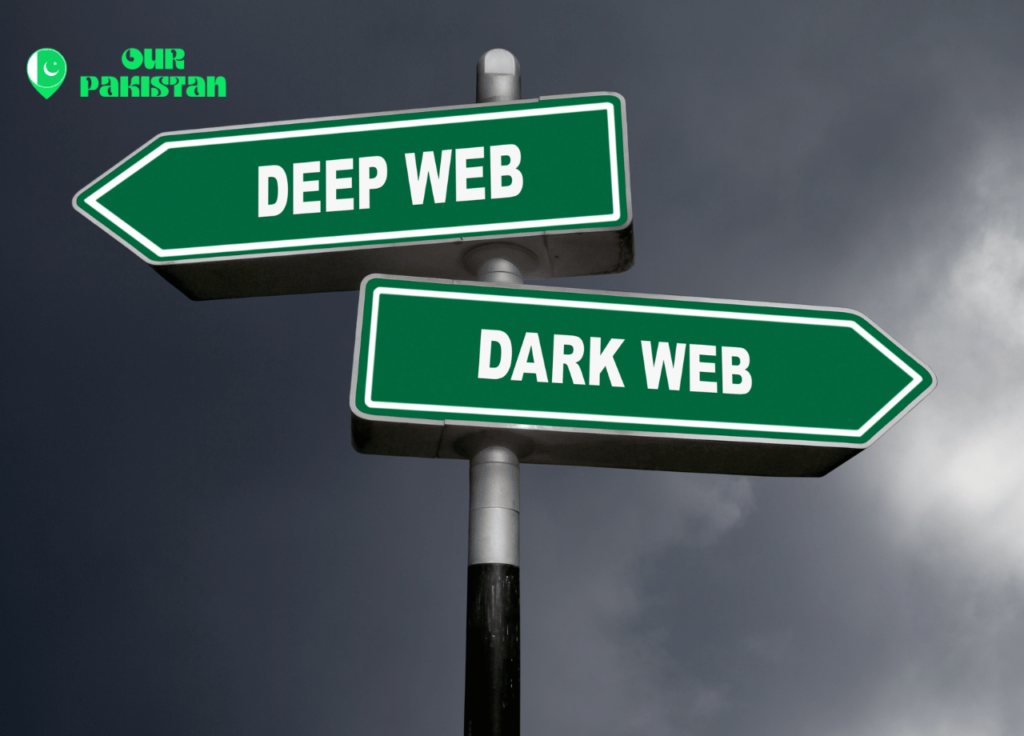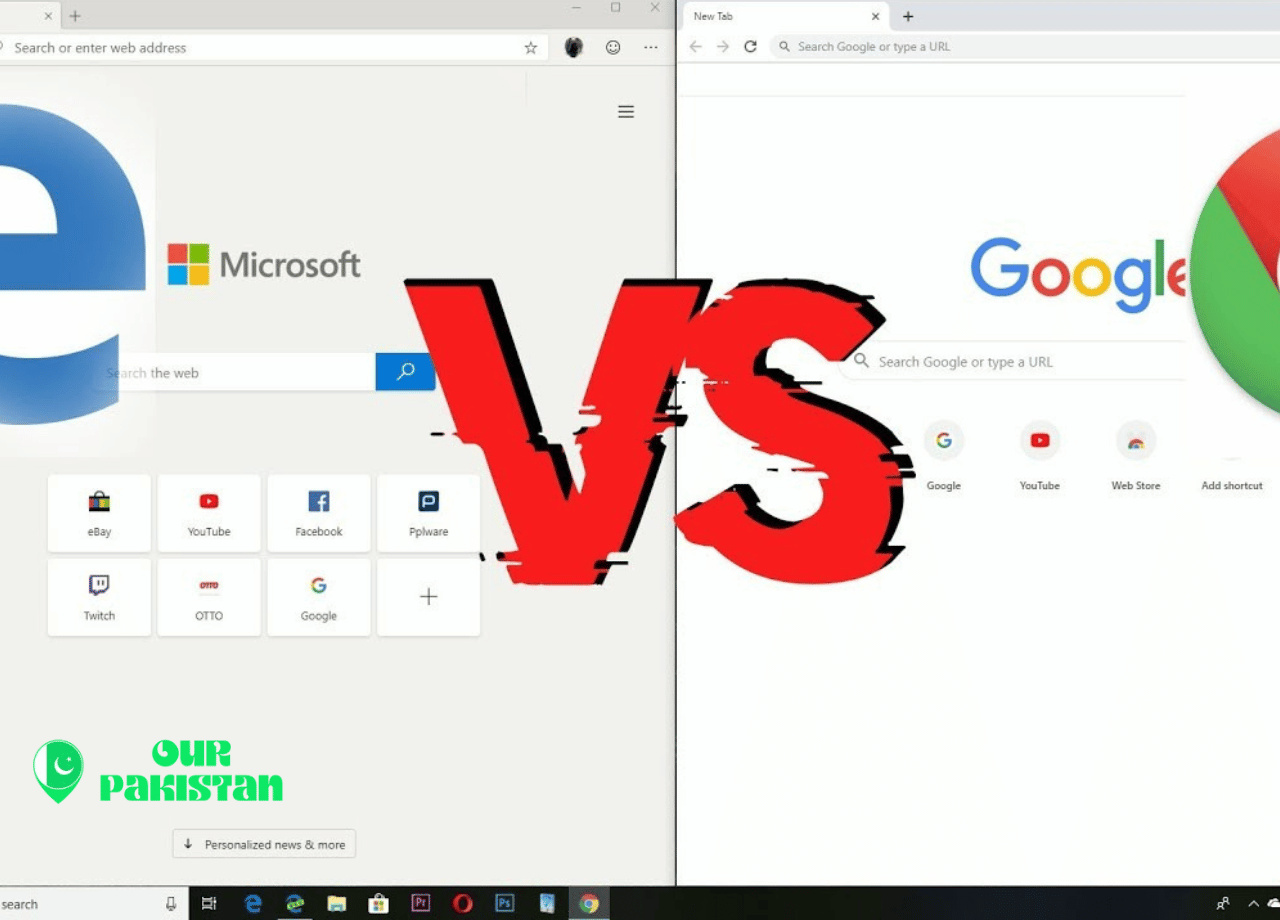Beyond the surface of mainstream internet browsing, where search engines and social media platforms reign, lies the deep web, a vast and largely misunderstood realm. This hidden web, much like an iceberg, keeps the bulk of its content beneath the surface, inaccessible to standard web crawlers, and hidden from the casual user. It encompasses everything from intranets used within corporations and educational institutions to highly secure databases protected by firewalls and encryption. While the deep web may conjure images of cybercrime and illicit activities, it is also a haven for privacy and anonymity, offering a sanctuary for those who seek to escape the ever-watchful eyes of surveillance in an increasingly interconnected world.
Note!, The content here is only presented for educational purposes only,
This article aims to navigate the complex layers of the deep web, from understanding the hub of deep websites to distinguishing the legal nuances that differentiate between ethical and unethical online activities. It will explore the technology that grants access to these hidden depths, such as the Tor browser and deep web browsers, which provide pathways to anonymity online. Additionally, the roles of cybersecurity measures, firewalls, and encryption in safeguarding the deep web’s gateways will be discussed, alongside the intriguing aspects of cryptocurrency in darknet transactions. Through case studies and analysis, this journey will demystify the misconceptions surrounding the deep web, presenting a clearer picture of its purposes, its users, and its indispensable role in the digital age.

Understanding the Hub of the Deep Web
The deep web, often misunderstood, is a vast part of the internet not indexed by conventional search engines. It is significantly larger than the surface web, comprising various layers that include both innocuous and hidden sections. This hidden zone, known as the dark web, forms a small yet significant part of the deep web, characterized by its high level of privacy and anonymity.
Key Components and Technologies
The infrastructure of the deep web is built on several critical technologies that ensure its contents remain inaccessible to standard web crawlers. The Domain Name System (DNS) plays a foundational role by mapping domain names to IP addresses, a process invisible to the average internet user. This system, alongside the Transmission Control Protocol (TCP), which manages the connection between clients and servers, forms the backbone of internet communications that the deep web utilizes to remain obscure.
Moreover, the security measures on the deep web are stringent, with firewalls and Hypertext Transfer Protocol Secure (HTTPS) encrypting communications, thus providing an additional layer of security and privacy. These protocols are crucial for protecting the data and maintaining the confidentiality of deep web activities.
The Role of Specialized Browsers
Accessing the deep web, particularly its dark web segment, requires specialized browsers like the Tor browser. These browsers are designed to navigate the complex layers of the deep web, allowing users to access websites with the .onion top-level domain, which is not available through standard browsers. The Tor browser, for instance, routes internet traffic through a free, worldwide, volunteer overlay network consisting of more than seven thousand relays to conceal a user’s location and usage from anyone conducting network surveillance or traffic analysis.
Misconceptions and Realities
Contrary to popular belief, the deep web is not solely a haven for illicit activities. While it is true that the dark web, a component of the deep web, hosts black markets and forums for illegal trades, the majority of the deep web is made up of benign, everyday internet activities like email communications and protected databases. It’s essential to distinguish between the legitimate uses of the deep web for privacy and security and the criminal uses that have garnered more media attention.
Understanding the hub of the deep web involves recognizing its vastness and complexity, the technologies that keep it hidden, and the legitimate reasons many opt to use it, from safeguarding privacy to accessing information not available on the surface web. This knowledge demystifies the deep web and clarifies its role in the digital ecosystem.
Types of Content Found in the Deep Web
The deep web is a vast, hidden part of the internet, not indexed by conventional search engines, and it hosts a variety of content types that serve both ordinary and specialized needs.
Academic Databases
A significant portion of the deep web is dedicated to academic databases like JSTOR, which archives thousands of journals and books. These databases are essential for researchers and scholars who require access to historical papers, scientific studies, and other academic materials that are not available through standard search engines. Other notable academic resources include PubMed and the IEEE Xplore Digital Library, which provides extensive databases for medical and technological research, respectively.
Private Networks
Private networks form another crucial component of the deep web. These include intranets used by corporations, governments, and educational institutions to facilitate secure communications and information sharing within their organizations. These networks are designed to be inaccessible from the public internet, ensuring privacy and security for sensitive organizational operations.
Government and Corporate Information
The deep web also contains vast amounts of government and corporate information that are not accessible to the public. This includes everything from financial records and legal documents to strategic communications and operational data. Such information is often protected by robust security measures to prevent unauthorized access and ensure confidentiality.

Medical Records
Medical records represent a critical type of content on the deep web. These records are highly confidential and include sensitive information such as patient histories, treatment records, and other personal health information. Access to these records is tightly controlled, often requiring specific credentials and secure authentication to ensure patient privacy and compliance with health regulations like HIPAA.
The types of content found in the deep web highlight its complexity and the critical role it plays in various aspects of digital communication and information storage. While it is often portrayed in a negative light due to its association with the dark web, the deep web primarily serves legitimate purposes, providing privacy and security for everyday internet activities.
The Role of Search Engines in the Deep Web
Search engines play a pivotal role in how information is accessed on the internet; however, their capabilities extend differently into the deep web. Due to the unique structure and access requirements of the deep web, conventional search engines like Google, Bing, or Yahoo are unable to index its contents comprehensively.
Why Content Remains Unindexed
A significant reason why content remains unindexed in the deep web is due to the deliberate exclusion by web pages. Webmasters can employ a simple script known as “robots.txt” to instruct search crawlers not to index certain URLs. This exclusion is often necessary for privacy and security, as much of the deep web content requires authentication for access. This includes a wide array of materials such as grey literature, which encompasses corporate and working papers, white papers, reports, evaluations, and unpublished academic data. Additionally, database material, although indexed internally within the deep web, remains inaccessible through standard search engines. This layer of the internet also houses paywall and password-protected content from diverse sectors including academic, corporate, governmental, legal, financial, NGO, and medical/public health sources.
Search Engine Limitations
The architecture of the deep web poses inherent challenges to conventional search engines. The content here often consists of dynamic content, databases, and other forms that require specific protocols or permissions for access. Unlike the surface web, where information is readily accessible, the deep web includes content that is dynamically generated and is not indexed by standard search engines. This necessitates the use of specialized tools and knowledge for access, making it largely inaccessible to the average internet user.
Moreover, the deep web’s reliance on privacy and security measures means that much of its content is hidden behind paywalls and robust security protocols, further complicating the task of indexing by standard search engines. For instance, many resources in the deep web utilize “.onion” URLs, which are only viewable through specific browsers like Tor. Accessing this information not only requires specialized software but also a deeper understanding of the deep web’s operational protocols, which differ significantly from the surface web.
In summary, while search engines are adept at navigating and indexing the surface web, their functionality is limited when it comes to the deep web due to its unique structure and the protective measures in place to guard its content. This creates a distinct separation between the easily accessible surface web and the more secluded, intricate deep web.
Legal vs. Illegal Activities on the Deep Web
Legal Usage Examples
The dark web, often portrayed as a nefarious underworld, also serves as a platform for legitimate and even lifesaving activities. It provides a secure environment where whistleblowers can share sensitive information without fear of reprisal, using platforms like SecureDrop to maintain anonymity while leaking critical data to journalists. This aspect of the dark web is crucial for activists, journalists, and individuals in oppressive regimes, allowing them to communicate and disseminate information away from the prying eyes of government surveillance.
In regions where internet access is heavily censored, the dark web offers a vital gateway to unrestricted information. For example, individuals in such countries can access global news sites like ProPublica and The New York Times through their dark web mirrors, ensuring access to real news without government interference. Additionally, educational and research-focused platforms on the dark web, like the American Journal of Freestanding Research Psychology, provide free access to academic papers, contributing to knowledge dissemination without legal repercussions.
Illegal Activities and Cybercrime
Conversely, the dark web is infamous for facilitating a range of illegal activities that exploit its anonymity. This includes the sale of illegal drugs, weapons, and counterfeit goods on marketplaces like Silk Road and AlphaBay, which have been targets of major law enforcement shutdowns. The anonymity of the dark web also supports the darker side of cybercrime, where cybercriminals trade malware, botnets, and hacking services. High-profile cyberattacks, such as those attributed to the Lazarus Group, have been linked to dark web activities, showcasing the global threat posed by these anonymous networks.
Moreover, the dark web hosts disturbing activities like human trafficking and child pornography, with platforms specifically designed to facilitate these crimes operating under the radar of law enforcement agencies. The financial transactions supporting these illegal activities often utilize cryptocurrencies, which, while legitimate in themselves, are abused within the dark web to obscure the money trails from illicit deals.

The dual nature of the deep web, supporting both legal and illegal activities, underscores the complexity of this digital realm. It serves as a reminder of the ongoing battle between maintaining privacy and preventing abuse, highlighting the need for informed and balanced approaches in digital policy and law enforcement.
Tools and Browsers Used to Navigate the Deep Web
Navigating the deep web requires specific tools and browsers designed to protect user privacy and anonymity. Among these, the Tor Browser, the Invisible Internet Project (I2P), and Virtual Private Networks (VPNs) are pivotal.
Tor Browser
The Tor Browser is central to accessing the deep web, utilizing a network of volunteer-operated servers to anonymize user’s web traffic. Unlike conventional browsers, Tor routes internet traffic through multiple servers and encrypts it each step of the way, making it difficult to trace back to the user. This process not only enhances security but also aids in bypassing censorship. Users can adjust the security settings within the browser to further safeguard their browsing activities, opting for levels that restrict certain scripts and media to run only with user consent.
I2P – Invisible Internet Project
I2P offers a robust platform for secure communications, operating as a fully encrypted private network layer. It utilizes unidirectional tunnels and a decentralized network approach to ensure that the activities and locations of its users remain hidden. This system is particularly resistant to deep packet inspection and censorship, making it a preferred choice for users needing high levels of privacy and security. The network supports various applications and services, maintaining its own unique DNS, which allows for self-hosting and mirroring of content.
VPNs
Virtual Private Networks (VPNs) enhance privacy on the internet by encrypting users’ data and masking their IP addresses. When combined with tools like the Tor Browser, VPNs provide an additional layer of security, making it even more challenging for third parties to track online activities or determine the user’s location. This dual layer of protection is crucial for those navigating the deeper, more private sectors of the web, where maintaining anonymity is often essential.
These tools collectively form the backbone of secure and private navigation in the deep web, each offering unique features tailored to enhance user security and anonymity while browsing beyond the surface web.
Case Studies of Deep Web Usage
Success Stories
The deep web, often veiled in mystery and controversy, has also been a platform for significant legitimate uses. For instance, the dark web, a part of the deep web, has been crucial for whistleblowers and political activists. One notable case is the use of SecureDrop, a secure communication platform that allows individuals to share sensitive information anonymously. This tool has been instrumental in protecting whistleblowers who might otherwise face serious repercussions in oppressive regimes.
Moreover, major news organizations and even governmental agencies like the CIA have established a presence on the Tor network to facilitate secure communication channels. These “.onion” sites ensure that individuals can share information securely and anonymously, showcasing a commitment to privacy and the protection of sources.
Failures and Controversies
However, the deep web is not without its dark side. The Silk Road, the first modern darknet market, became infamous for its trade in illicit goods and services, ranging from drugs to illegal weapons. Despite its shutdown by the FBI, the marketplace model has persisted, with new platforms emerging to replace it. These markets operate with high levels of anonymity and security but have continually been targets for law enforcement due to their illegal activities.

The case of Hydra, a Russian darknet marketplace, highlights the scale of illegal operations that can exist on the deep web. Before its shutdown in April 2022, Hydra was one of the largest darknet markets and significantly influenced the dark web’s economy, dealing in everything from drugs to stolen data.
Law enforcement agencies face significant challenges in policing the deep web. The anonymity that the Tor network provides means that tracking illegal activities requires sophisticated techniques. Agencies must often infiltrate these networks undercover to gather intelligence and evidence, a task that is both risky and complex.
Additionally, high-profile cyberattacks have demonstrated the vulnerabilities associated with the deep web. For example, the cyberattack on MGM Resorts resulted in the theft of sensitive data, which was later claimed to be for sale on the dark web by a group known as Scattered Spider. This incident not only highlights the cyber risks associated with the deep web but also the potential financial and reputational damage to businesses.
The deep web’s dual nature as both a shield for privacy and a shield for illegal activities presents a continuous challenge for cybersecurity and law enforcement. While it empowers free speech and privacy, it also serves as a battleground for cybercrime, demanding ongoing efforts to balance security and freedom on the internet.
Conclusion
Through this exploration, the article has illuminated the intricate labyrinth of the deep web, a landscape far more nuanced than the binary of good and evil often portrayed by mainstream narratives. We journeyed beyond the veil of the surface internet, uncovering the layers where privacy, anonymity, and the quest for ungoverned knowledge converge. The narrative unpacked the technological marvels that make the deep web accessible, while also threading the fine line between legal sanctuaries and the shadowy recesses of cybercrime. It has been a voyage that, akin to a mystery story, peeled back the layers of misconceptions surrounding the deep web, revealing a realm where the quest for freedom from surveillance and the pursuit of unrestricted knowledge is paramount.
As the tale of the deep web unfolds, the dual nature of its existence becomes clear. It is a domain where anonymity shields the persecuted, where knowledge finds sanctuary from censorship, and where the spirit of the internet’s unfettered origins persists. Yet, within its shadows lurk entities that challenge our ethical boundaries, reminding us of the ongoing battle between the forces of innovation and exploitation. This journey through the deep web’s enigmatic waters reminds us of the constant evolution of the digital age, urging a dialogue that encompasses the vast shades of grey in between. As readers, we’re left with a deeper understanding of the deep web’s complexity, and a call to navigate this digital frontier with both caution and an open mind, keeping the torch of inquiry alight as we delve into the mysteries that lie beneath the surface web.
FAQs
The deep web consists of web pages that are not indexed by search engines. This can be because they are protected by passwords or security measures, or because they instruct search engines not to index them. As a result, these pages remain hidden for various reasons and are not accessible through regular search queries.
The hidden part of the internet, known as the deep web, is a substantial portion of the World Wide Web that standard search engines like Google, Bing, or Yahoo do not index. It remains concealed from the general public and is not accessible through normal web browsing.
The dark web is a segment of the internet designed to allow users to remain anonymous, hiding their identity and location from others and law enforcement agencies. This anonymity makes it a hub for activities such as trading stolen personal information.
The dark web is significantly smaller than many might imagine. To give you an idea, the deep web is about 400 to 500 times larger than the surface web, which is what we generally access through search engines. The dark web makes up only about 0.01% of the deep web and about 5% of the total internet.



